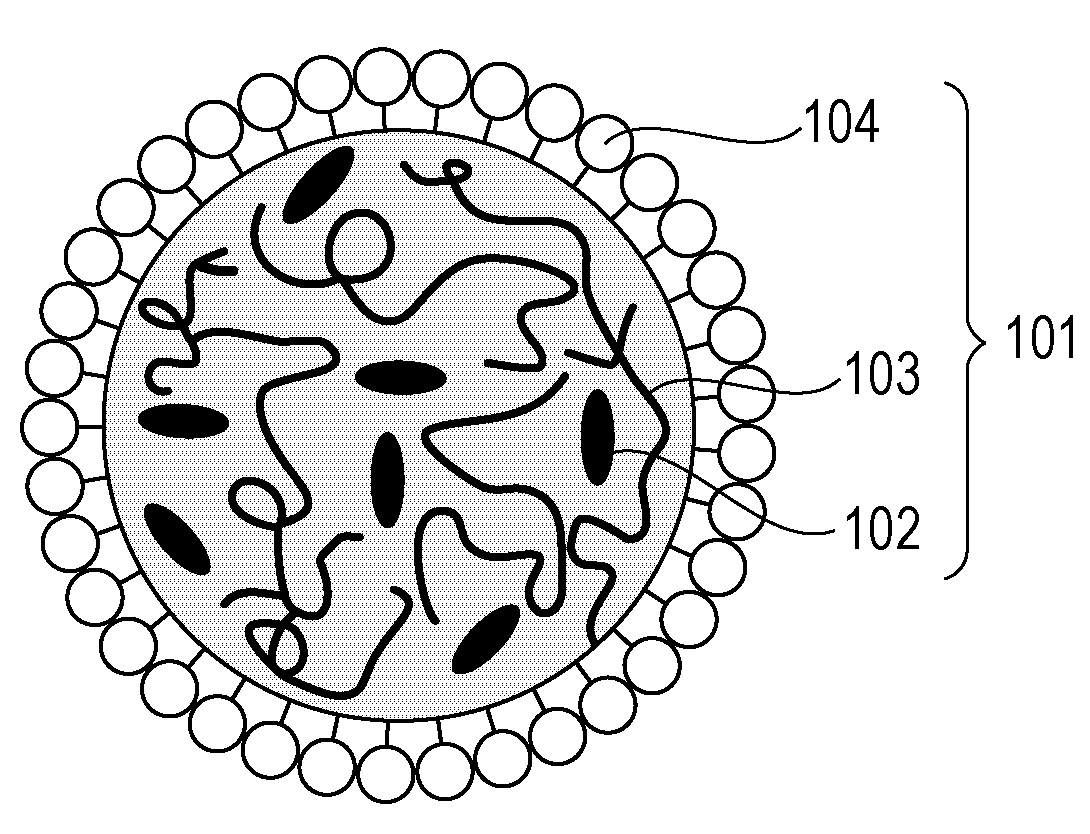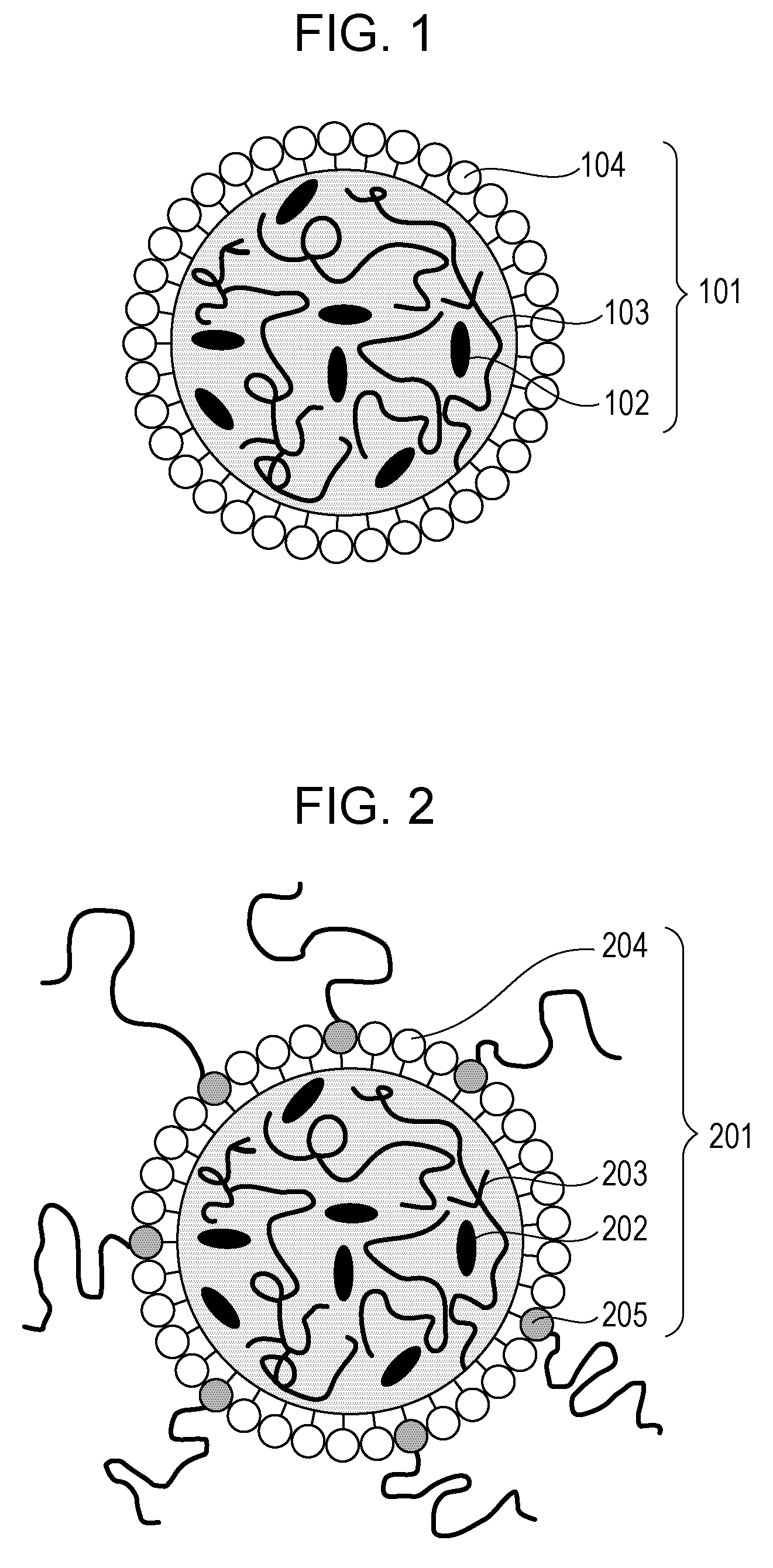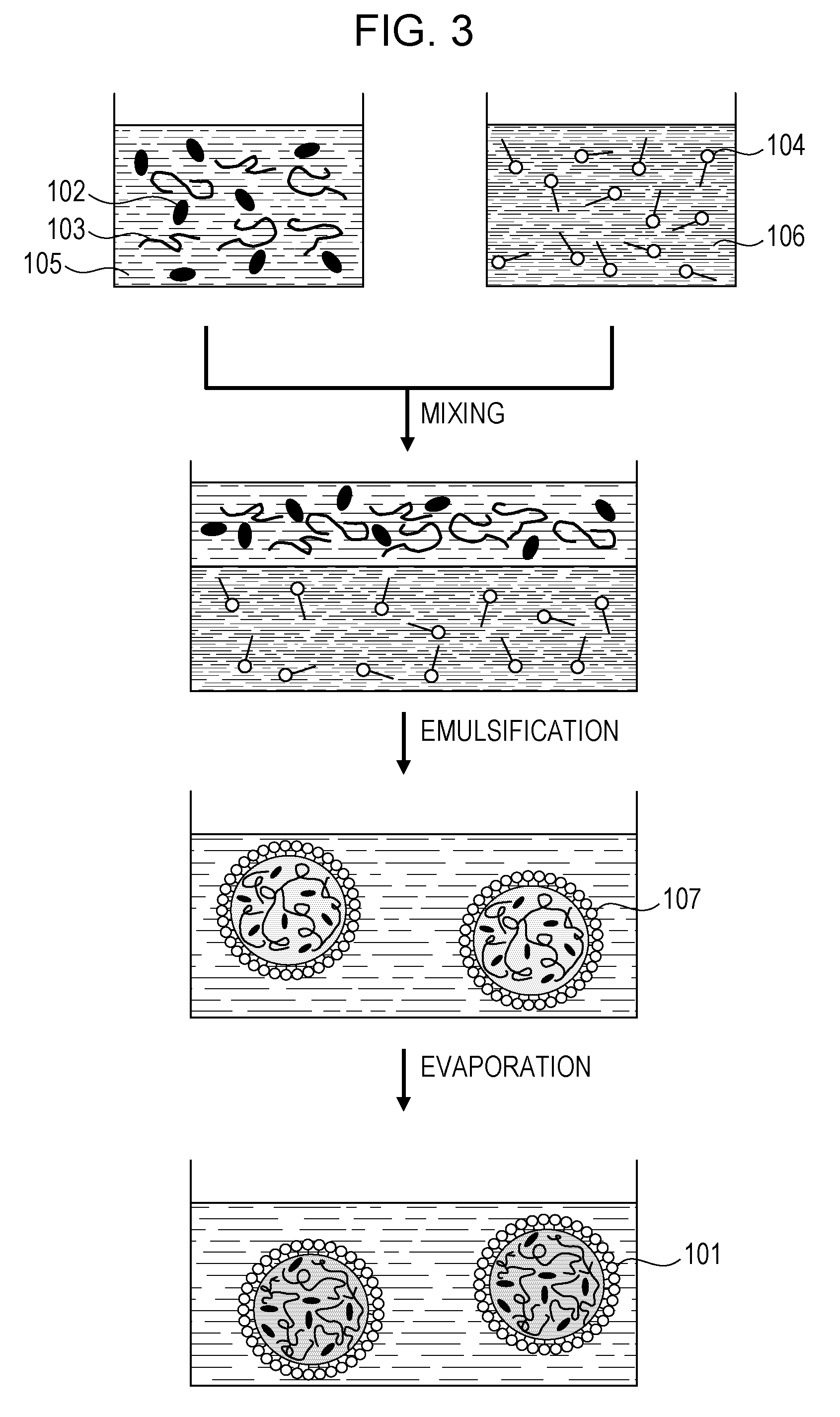Particles and contrast agent including the same for optical imaging
a contrast agent and particle technology, applied in the direction of echographic/ultrasound-imaging preparations, pharmaceutical delivery mechanisms, powder delivery, etc., can solve the problems of high tumor accumulation, reduce the leakage of dye, and reduce the tumor accumulation.
- Summary
- Abstract
- Description
- Claims
- Application Information
AI Technical Summary
Benefits of technology
Problems solved by technology
Method used
Image
Examples
example 1
Particles Containing Compound 1 (Particles 1)
Preparation of Particles 1 (PNP1)
[0085]Compound 1 described above (0.88 mg, manufactured by Sigma-Aldrich Japan K.K.) and PLGA (5 mg, the composition ratio of lactic acid to glycolic acid: 50:50, average molecular weight: 20,000, manufactured by Wako Pure Chemical Industries, Ltd.) were dissolved in 1.6 mL of chloroform to prepare dye-chloroform solution 1.
[0086]An aqueous solution (20 mL) of Tween 20 (180 mg, manufactured by Tokyo Chemical Industry Co., Ltd.) dissolved therein was stirred at room temperature for 20 minutes or more. The dye-chloroform solution 1 was then added dropwise to the aqueous solution under stirring. The resulting mixed solution was stirred for 30 minutes. The mixed solution was treated with an ultrasonic dispersion machine 90 seconds to prepare an O / W emulsion.
[0087]The emulsion was stirred under heating (40° C.) to remove chloroform from the dispersoids. Then the emulsion was subjected to ultrafiltration or cent...
example 2
Particle Containing Compound 1 (Particle 2)
Preparation of Particle 2 (PNP2)
[0090]Particles 2 (hereinafter, referred to as “PNP2”) were prepared by the same method as the method for preparing PNP1, except that the amount of Tween 20 was changed from 180 mg to 90 mg.
Evaluation of Physical Properties of PNP2
[0091]Analysis of PNP2 with a dynamic light scattering spectrophotometer demonstrated that PNP2 had an average particle size of 173.7 nm (which is a value determined by a cumulant analysis). PNP2 had a molar extinction coefficient of 5.6×1010 M−1 cm−1. The photoacoustic signal intensity was 1.7×1012 VJ−1M−1. PNP2 was subjected to the dye leakage test. The residual rate of the dye in the particles was 98%.
example 3
Particle Containing Compound 1 (Particle 3)
Preparation of Particle 3 (PNP3)
[0092]Particles 3 (hereinafter, referred to as “PNP3”) were prepared by the same method as the method for preparing PNP1, except that the amount of Tween 20 was changed from 180 mg to 360 mg.
Evaluation of Physical Properties of PNP3
[0093]Analysis of PNP3 with a dynamic light scattering spectrophotometer demonstrated that PNP3 had an average particle size of 143.4 nm (which is a value determined by a cumulant analysis). PNP3 had a molar extinction coefficient of 2.8×1010 M−1 cm−1. The photoacoustic signal intensity was 8.8×1011 VJ−1M−1. PNP3 was subjected to the dye leakage test. The residual rate of the dye in the particles was 99% or more.
PUM
| Property | Measurement | Unit |
|---|---|---|
| Particle size | aaaaa | aaaaa |
| Particle size | aaaaa | aaaaa |
| Ratio | aaaaa | aaaaa |
Abstract
Description
Claims
Application Information
 Login to View More
Login to View More - R&D
- Intellectual Property
- Life Sciences
- Materials
- Tech Scout
- Unparalleled Data Quality
- Higher Quality Content
- 60% Fewer Hallucinations
Browse by: Latest US Patents, China's latest patents, Technical Efficacy Thesaurus, Application Domain, Technology Topic, Popular Technical Reports.
© 2025 PatSnap. All rights reserved.Legal|Privacy policy|Modern Slavery Act Transparency Statement|Sitemap|About US| Contact US: help@patsnap.com



